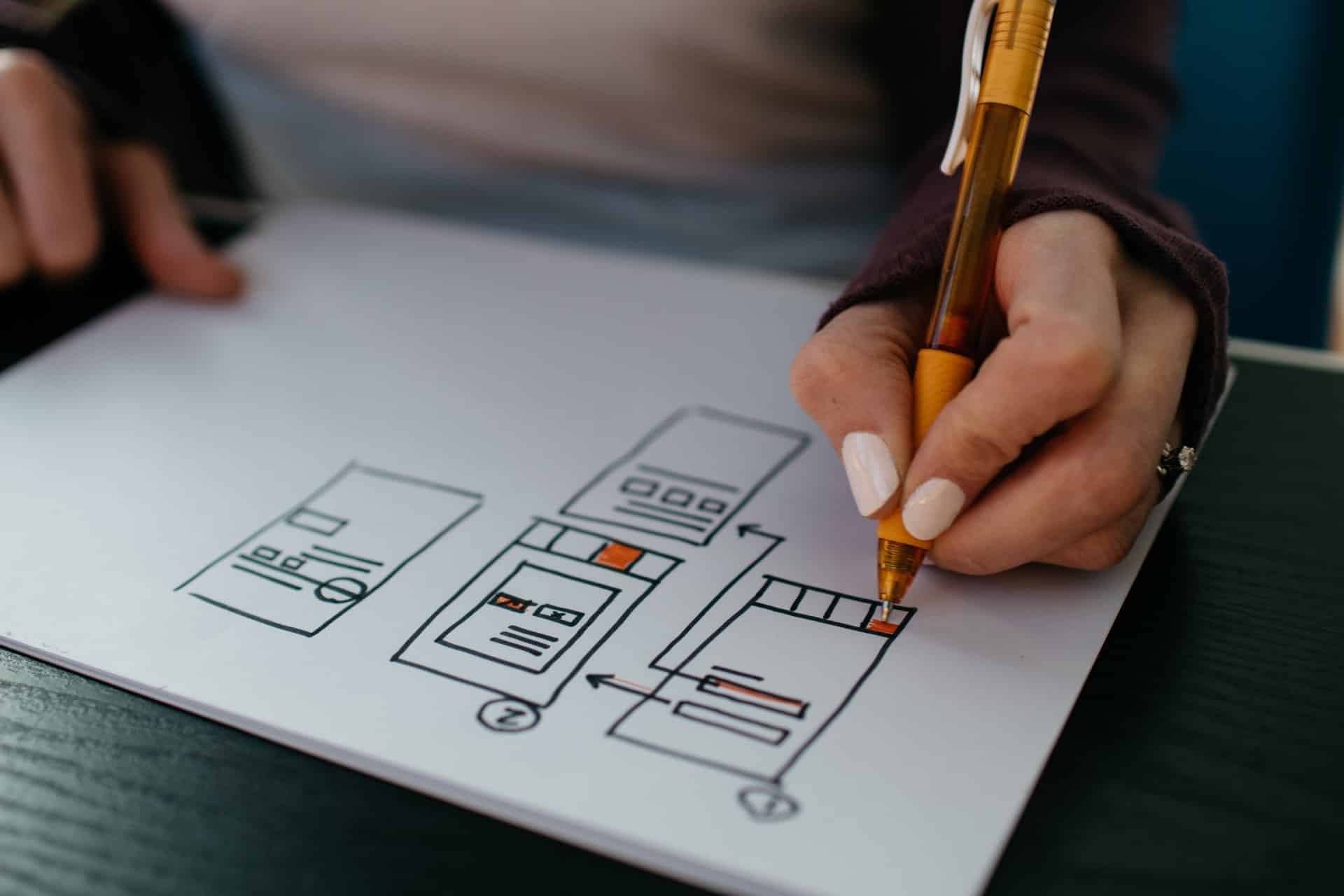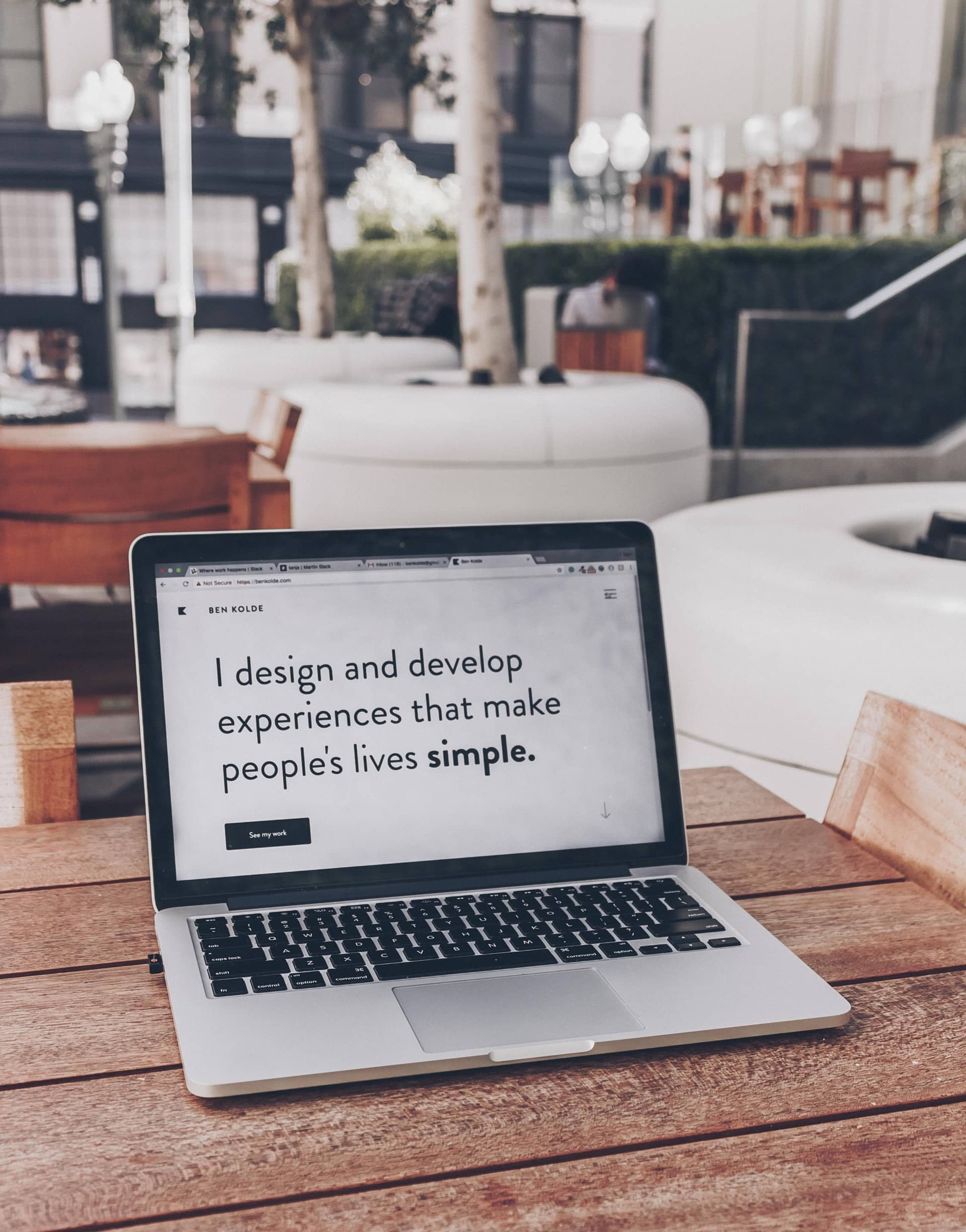Sure, seeing your website traffic metrics turning green is encouraging; however, your website’s ultimate goal is to transform a visitor into a loyal, satisfied customer, right? – For many brands, this task is difficult to achieve.
In fact, average conversion rates range between 2.35% and 5.31%, depending on the industry. On eCommerce websites, the conversion rate is around 2%, meaning only two out of one hundred users finalize their purchases.
Moreover, around 40% of marketers reported a conversion rate lower than 0.5%. Whether your site fits the industry’s average or you’re ill at ease due to low conversion rates, optimizing your website for conversions should top the list of your digital priorities.
How exactly does web design affect conversion rate optimization, and what are the design practices that convert visitors? Let’s find out!
IMAGE: UNSPLASH
What Is A Conversion Rate?
Marketing experts define conversion rate as the percentage of users who completed the desired website goal, such as making a purchase, inquiring about products/services, or filling out a contact form.
You can calculate your website’s conversion rate by dividing your visitors during a specific period of time by the number of those who converted in that timeframe.
If your website isn’t an eCommerce or service provider, the conversion rate can represent any metric that defines your brand’s success, such as your social media following, blog subscription, etc.
7 Elements Of Web Design That Affect Your Conversion Rate
Your website, from its appearance and accessibility to content and intuitiveness, is the principal factor in a users’ decision to put their trust, time, and money into your brand.
Yet, optimizing your site for maximum conversion isn’t just about making your website look good — it’s about ensuring that your website is well designed. This means following best web design practices that simplify how users interact with your website, to shorten their conversion path, and improve your site’s UX, among others.
Here are seven elements of a quality website design that converts.
1. Loading Speed
The digital world has advanced rapidly, and it’s only natural that users today expect a seamless online experience. According to data by Techjury from 2021, a single-second delay in page load causes a 7% drop in a website’s conversion rate.
Besides actually bringing your offer closer to your target audience faster, short loading time has a psychological effect on visitors. A fast loading website helps your visitors gain confidence in your brand, ensures a better user experience, and encourages shoppers to come back again and hopefully spread the good word about you along the way.
2. Mobile-Friendliness
Even though mobile devices account for around half of online traffic worldwide, the conversion rate on mobile devices is about 50% lower compared to desktops.
Besides being a major ranking factor, designing a website fit for mobile devices means users won’t click the wrong button or have to pinch the screen to zoom or scroll around to navigate the menu. A mobile-friendly website should load perfectly on a mobile device, with clear and large typography and an easy-to-read menu.
3.Intuitive User Flow
We all get quite disheartened and unnerved when we misplace our car keys and start rummaging around the house, only to find them in the most obvious of places, and get even more irritated we’ve overlooked them before.
Your website visitors feel quite the same when they cannot find the information they’re looking for. However, the major difference is that they don’t need one specific set of keys. If they can’t find information quickly and easily on your site, they can simply hop over to a competitor.
Online users have a well-developed understanding of where certain elements, such as a language switcher, search bar, and contact form, should be on a website.
Don’t reinvent the wheel. Instead, create an intuitive site layout, navigation, and menu hierarchy that users are familiar with. The fewer clicks users need to make, the greater the chance they will finalize their conversion.
4. Informative And Valuable Content
Landing pages designed to sell a product or a service are generally packed with content. Your sales page should reflect your target audience’s pain points, highlighting the problems your brand solves, the unique product features, and customer testimonials.
Content that converts focuses on benefits, not features. Your customers ultimately care about how you can make their lives easier, and this is what your sales page copy should aim for.
Keep the tone light and friendly, and don’t forget to use the pronoun “you” generously, to let the visitor know you’re speaking directly to them.
Investigate different variations of your keywords and use them in your website copy. If you’re a, let’s say, New York web design company, without proper research, you could miss out on some other keyword variations users utilize while searching, such as “design agency New York” or “website creation New York.”
5. CTA’s
Once your copy has nudged users to shop, it’s time to close the deal with a powerful CTA. Call-to-actions are buttons that urge your website visitors to complete the desired action. Quicksprout’s study observed that “submit” is one of the most common CTAs on the Internet, yet, “click here” is found to have the largest effect on conversion rate, increasing it as much as 30%.
Besides opting for convincing text, your CTA buttons should be eye-catching and clearly instruct the visitors what they should do.
Repeating the buttons throughout the page is OK; however, make sure you ask your visitors to perform a single action on each page. For example, placing different CTAs that invite users to complete a purchase, subscribe to a newsletter, or request a quote, all on one page, will only confuse the users and expedite them leaving your site.
6. Registration Forms
A third of shoppers abandon their carts when they’re forced to create an account. It’s a massive toll on your website’s revenue, yet gathering user data is important for establishing a lasting relationship between clients and your brand by creating a frictionless, personalized shopping experience. So what’s the solution?
Consider allowing your customers to opt-out from registering on your website when making a purchase. If you insist on users creating an account before purchase, do your best to streamline the registration process and make it as simple and quick as possible to register.
Cut the input fields to essential ones, and enable autocomplete for a quicker and more convenient registration process.
7. Social Proof
Developing trust among your target audience is integral to their conversion into customers. Yet, online users know better than allowing themselves to be wooed by mere sweet talk. Of course, quality and informative product/service descriptions are important, but exhibiting social proof seals the deal.
Nevertheless, there are plenty of brands that frequently fail to integrate a testimonials section into their website. An astonishing fact, as 9 out of 10 shoppers read online reviews, and studies suggest that sales pages with testimonials see a 34% conversion rate increase.
Still, perhaps even worse than not having testimonials on your site is posting too general, overly praising customer reviews written by a John Smith with a stock profile photo. If your users’ testimonials don’t address a particular problem you solved, a specific product’s feature, and are unreliable and impersonal, they risk coming off as fake.
8. Elements Of Web Design That Affect Your Conversion Rate
Your website, from its appearance and accessibility to content and intuitiveness, is the principal factor in a users’ decision to put their trust, time, and money into your brand. Yet, optimizing your site for maximum conversion isn’t just about making your website look good — it’s about ensuring that your website is well designed.
This means following best web design practices that simplify how users interact with your website, to shorten their conversion path, and improve your site’s UX, among others. Here are seven elements of a quality website design from Conversionrate store experts that convert.
If you are interested in even more design-related articles and information from us here at Bit Rebels, then we have a lot to choose from.


COMMENTS